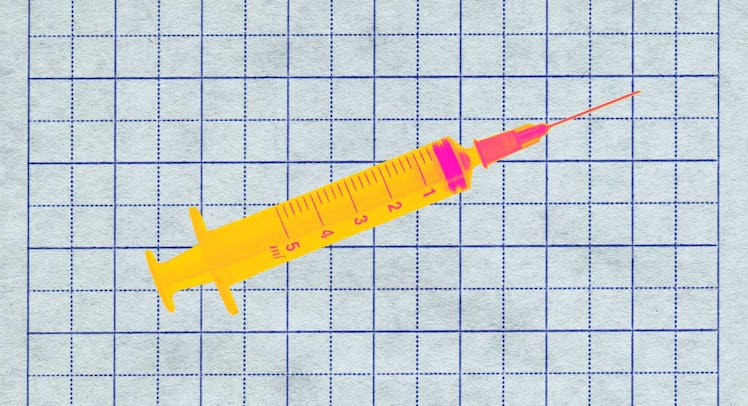Curious if Vaccines Are Safe for Kids? Consider How Many Lives They Save.
Vaccines save millions of lives each year, but vaccine skeptics are pushing back. Here's the data behind one of the most important public health issues of our time.

There may be some minor caveats, but it’s fair to say that vaccines are essentially safe. Like any other form of medical intervention, they can trigger reactions — mostly allergic — and cause death in infants. But for every tragedy there are many, many tragedies averted. From a public health perspective, which is to say an top-down view, vaccines save millions of lives each year and are necessary to keep our children safe. Nonetheless, vaccine skeptics—spurred by cut-rate science—often request waivers to allow their children attend school while shedding deadly diseases, resulting in dangerously low vaccination rates.
Here’s the data behind these conclusions:
The MMR Vaccine Saves Millions Of Lives Each Year
The most maligned of the routine shots is doubtless the measles, mumps, and rubella vaccine. It was the MMR vaccine that disgraced doctor Andrew Wakefield linked to autism, a claim so outrageous, so unfounded, and so dishonest that it ended his career in medicine. But the damage was done. Vaccine skeptics suggest that measles is a minor childhood disease, and that the (non-existent) risk of autism makes it irresponsible to vaccinate.
But data from the Centers for Disease Control and Prevention demonstrates that millions of children were dying from measles each year before the introduction of the vaccine. Had it not been for the MMR vaccine, the data projects, 1.4 million children would have died in 2016. Because of the MMR vaccine, worldwide measles deaths are down to roughly 500,000 per year instead of two million. (Does that sound like a minor childhood disease to you?)
Herd Immunity is Failing Our Kindergarteners
As it turns out, children who don’t get vaccinated are, in fact, protected by the vaccine anyway under certain circumstances. Measles can only persist in a population if fewer than 90 to 95 percent of constituents are vaccinated (a concept known as “herd immunity”). So as long as vaccine skeptics remain a minority, everyone is safe. Unfortunately, recent data from the CDC indicates that a handful of jurisdictions in the United States (the District of Columbia, Colorado, Indiana, Alaska, Kansas, and Idaho) have kindergarten MMR vaccination rates below 90 percent, and roughly half of the states in the union have rates below the ideal 95 percent mark.
The upshot? Vaccine skepticism is finally getting to the point that it might start hurting all of us.
But What About Dangerous Vaccines?
Vaccines are medical interventions, and so there are inevitable dangers associated with them. Fortunately, vaccines are among the safest medical interventions—only 1 in 10,000 even report an injury to seek compensation, and many of their cases are spurious. When vaccine injuries do occur (mainly allergic reactions, some rare neurologic conditions—but never autism, which is not caused by vaccines) the government doesn’t sweep it under the rug. The United States pays a settlement, and reports it online. The U.S. Department of Health and Human Services reports that vaccine courts have cost the U.S. government about $124 million per year since 1989.
Why are we showing you this data? To demonstrate that there is no government conspiracy to cover up vaccine injuries. This is publicly available data, and it’s clear that a minority of children are at risk. But in context, the numbers lead us to a clear conclusion. Prudent vaccination on the recommended schedule causes a handful of tragedies and saves tens of millions of lives.
This article was originally published on